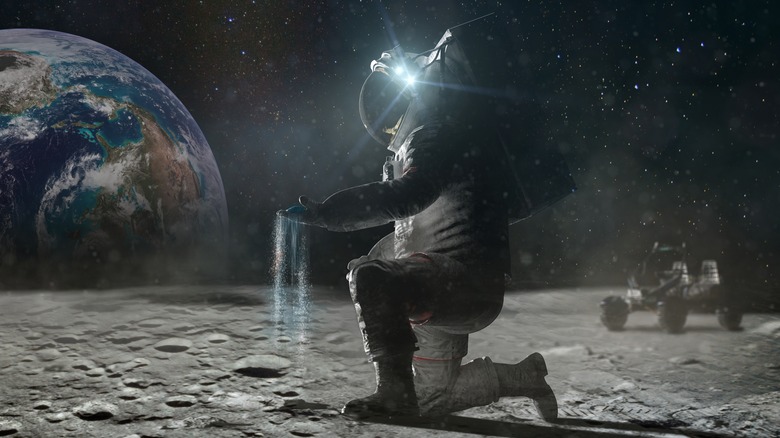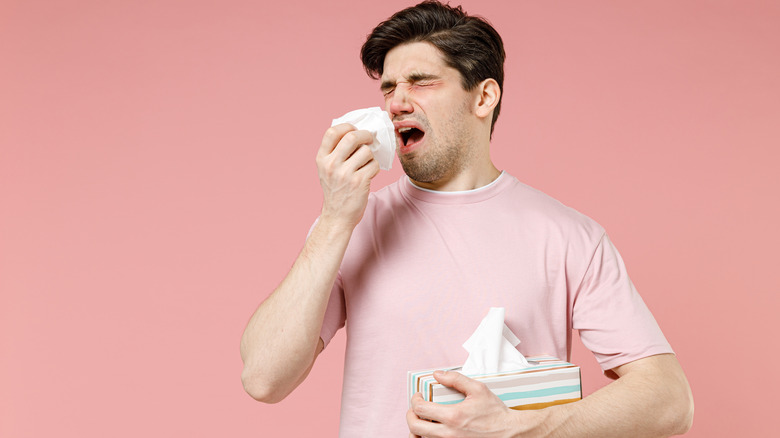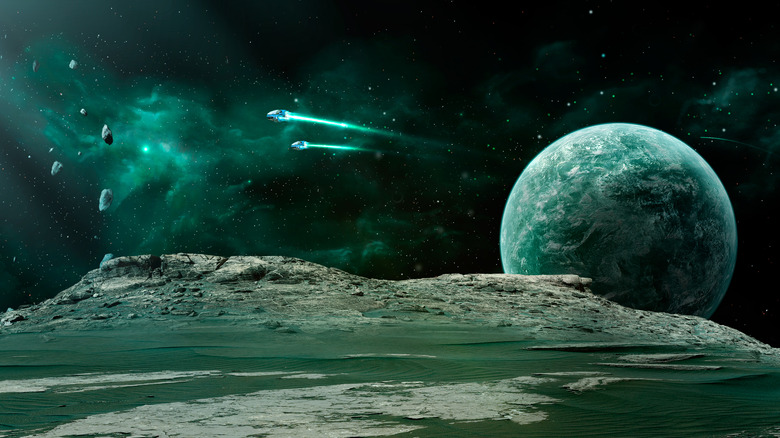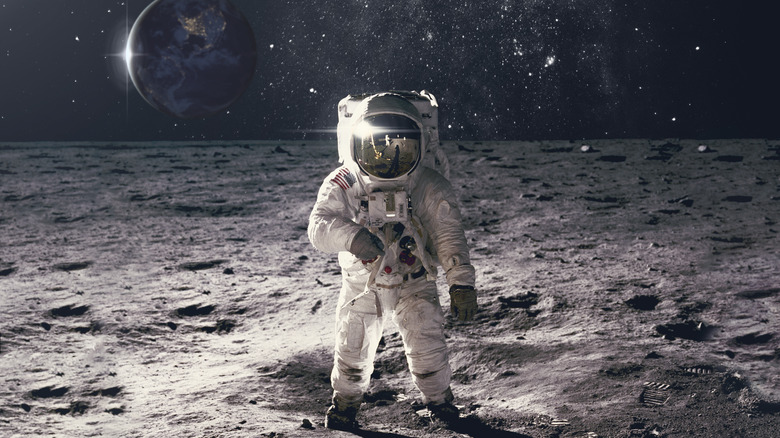What Is Lunar Hay Fever?
Unearthing the mysteries of space is certainly not for the faint of heart. Space travel is a dangerous endeavor from the lift-off to the landing, not to mention all the stardust in between. In fact, that very stardust is a problem of more epic proportions than many realize as it whirls through the galaxy, captivating our attention.
By now, most space enthusiasts are aware of the ill effects that traveling to other planets can have on the body. NASA reports that the zero-gravity experience is wrought with issues like an increased risk of cancer due to radiation exposure, problems with bone density, muscle function, and the cardiac system as a result of weightlessness, and even issues from contaminants inside the space station itself, as microbes can shift and transform once they push past the limits of outer space.
But here's something that might tickle you — at least, if you're on the moon. When an astronaut's nose begins to twitch, when their eyes water, and they fall into uncontrollable fits of sneezing, they are suffering from something known as lunar hey fever, and it's all in that stardust, according to Edible Geography.
Space allergies attack!
When we imagine a space attack taking place, it's usually some extraterrestrial with tentacles for legs and a toothy vacuum cleaner face hurling an unsuspecting astronaut into the depths of a dark black hole, a la movies. Alas, in real life, many astronauts are having heated encounters with something much less sinister: dust mites. And they are causing allergies galore (via Allergic Living).
Health and wellness in outer space is actually a really big deal, because the lack of gravity already compromises the immune system (per Medical News Today). On that note, while some Earth allergies are more annoyance than anything, NASA reports that it launched an entire program dedicated to finding and fighting these pesky space dust mites. The initiative, known as The Aerosol Sampling Experiment, makes use of sophisticated electron microscopy techniques, which are nothing to sneeze at. In order to analyze the International Space Station's allergy-laden air, samples are collected in orbit and then returned to Earth to be inspected using high resolution electron microscopes, like the Hitachi S-5500 SEM, which is fitted with energy dispersive spectroscopy, allowing scientists to view bright and dark field imagery at the same time (via The University of Texas at Austin's Texas Materials Institute).
Lunar hay fever's been around for decades
If the term "lunar hay fever" has a totally tubular ring to it, that's because the phrase and the concept originated in the 1970s. According to NASA Science, the phrase was first coined by Apollo astronaut Harrison Schmitt, who had been moonwalking with his commander, Gene Cernan, when the space dust first struck him.
According to reports, the two astronauts took a brief tour of the Taurus-Littrow valley, unwittingly tracking moon dust back onto the Challenger when they returned. Soon after the lunar dust was discovered, Schmitt experienced the telltale signs of allergies and exclaimed that it was "lunar dust hay fever." As time pressed on, other astronauts followed suit, describing similar dust particles and allergic reactions. The European Space Agency reports that lunar hay fever hit every single astronaut that ever set foot on the moon, setting off a chain of allergic reactions in the already-congested spaceships.
It could be more dangerous than scientists initially projected
According to NASA Science, when astronauts Harrison Schmitt and Gene Cernan first witnessed the lunar dust spiraling, they likened its smell to gunpowder, which was an accurate observation. Lunar dust presents as a fine, powder-like substance, until it enters the lungs, where it can become as sharp as glass (per The European Space Agency). Some of this is due to the properties of the dust particles and some of this is due to the effects of microgravity. On the moon, which exhibits one-sixth the amount of gravity of Earth, the jagged dust particles remain in the air longer, allowing them to dig deeper into the lungs. Pulmonary physiologist and professional space researcher Kim Prisk says the lengthy exposure can increase the risk for toxic aftereffects, such as lung damage or even brain cell deterioration.
It seems somewhat dire to die from a dust allergy, but we've actually witnessed events like this on earth, as pathologist Russell Kerschmann wisely noted in his interview with NASA Science. Kerschmann claims the lunar dust bears an uncanny resemblance to silica dust which, when breathed in for extended periods, attacks the immune system, filling the lungs with proteins from the bloodstream, until eventually "the victim slowly suffocates from a pneumonia-like condition." Sadly, silicosis, widely known as stone grinder's disease or black lung, claimed the lives of hundreds of Great Depression Era mining workers and it is still doing damage, according to NPR.



